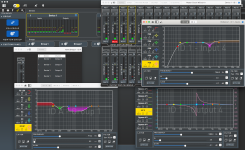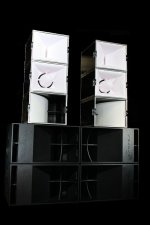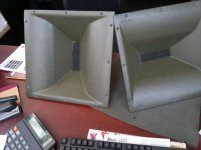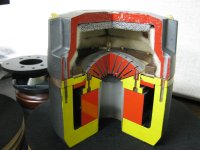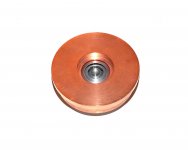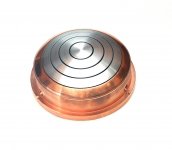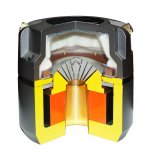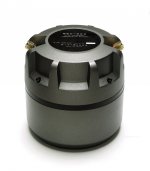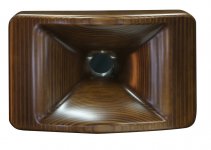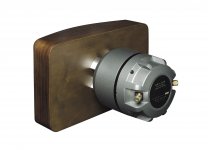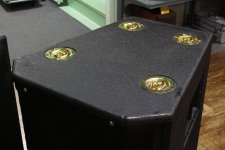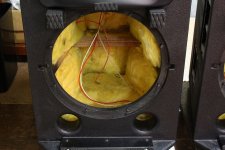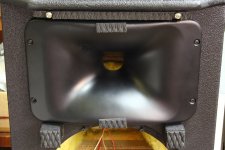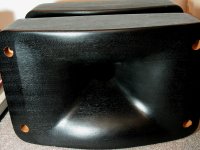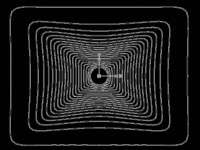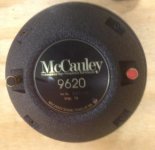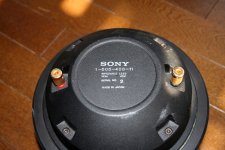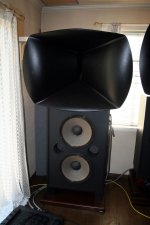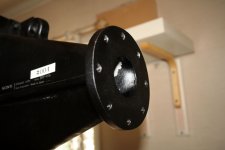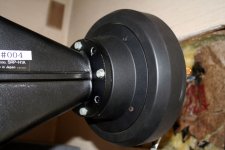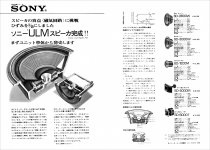No, PA companies only patent specific intellectual properties, not generic solutions.
This company did apply patents for their line-array and DSP technology.
This company did apply patents for their line-array and DSP technology.
Attachments
Last edited:
And yet another pair of horns from the same company.
Attachments
Last edited:
At least the early versions were fitted with a TAD TL-1601a and the Sony SUP-T11 (Aluminum diaphragm).
There are also MF-2s with an additional AMT on top.
Those are SUPERB drivers, especially the Sony compression driver!
Those are SUPERB drivers, especially the Sony compression driver!
The Sony drivers were supposedly developed with input from ALE/Goto engineers (mr. Goto) ao.
The SUP T11 is more or less identical to the G.T. SOUND GSU-D04.
(Translated) specifications:
Thickness 35μm aluminum diaphragm and the voice coil is electric welded.(no glue) →Light weight vibration system. It is almost flat up to 24kHz. Even a minute signal reproduces plainly.
Adopted pure brass throat with gold plating → The throat has huge effect on sound quality. By making it in pure brass it is able to create a clear sound.
Adopt strong alnico magnet (weight: 3.1Kg) →High magnetic induction of 20,000 gauss.
Phase plug is assembled without any glue. All machined out structure →Low distortion and improvement in low frequency and magnetic efficiency.
Adopt edge wise wind up voice coil →superior in conductivity and line mount pure aluminum stute wire for excellent reliability and linear.
Adopt aluminum machined out phase plug →By its multiplex structure it produces solid structure and beautiful finish with low distortion.
Back cover is made from zinc which has high vibration absorption character →Lowers Back Chamber's resonance and natural sound with no coloration.
Precise parts, production quality control, measurement and adjustment →All products are matched→Left and right channels sound uniforms→Low distortion.
Official impedance: 12.5Ω
[Horn throat] diameter: 49.2mm
Voice coil diameter: 101mm
Bandwidth: 500-24,000Hz
Recommended crossover frequency: More than 500Hz
Ratings input: 25W
Output sound pressure level: 110dB/W/m
Magnetic induction: 20,000 Gausses
Externals size (outside diameter × height): 178×175mm
Mass: 18kg
Attachments
Last edited:
Comment from G.T. Sound:
When the economy was growing at Sony Music (SME), people such as Mr. Hazama, Mr. Takada, Mr. Sakamoto, Mr. Fuke and Mr. Ooyama spent lot of time and effort in order to create pro-speaker unit called SUP-L11(Woofer) and SUP-T11(Driver). Both of these units were made for recording studio and broadcasting station with the latest technology of that time. But these units tastes of sound itself sounded rather light. So we asked Sony to create a unit specially for consumer uses without changing the specification. Which was the SUP-L11G and SUP-T11G.
Further we asked Sony to create the Ultra High (20KHz to 100KHz) SUP-T21G. But after a while Sony withdrawal from pro-audio and the units were discontinued. We at GT Sound wanted to leave this fabulous unit so we decided to create it our selves.
The shape and data is almost same as Sony's unit. The actual sound itself has been improved.
When the economy was growing at Sony Music (SME), people such as Mr. Hazama, Mr. Takada, Mr. Sakamoto, Mr. Fuke and Mr. Ooyama spent lot of time and effort in order to create pro-speaker unit called SUP-L11(Woofer) and SUP-T11(Driver). Both of these units were made for recording studio and broadcasting station with the latest technology of that time. But these units tastes of sound itself sounded rather light. So we asked Sony to create a unit specially for consumer uses without changing the specification. Which was the SUP-L11G and SUP-T11G.
Further we asked Sony to create the Ultra High (20KHz to 100KHz) SUP-T21G. But after a while Sony withdrawal from pro-audio and the units were discontinued. We at GT Sound wanted to leave this fabulous unit so we decided to create it our selves.
The shape and data is almost same as Sony's unit. The actual sound itself has been improved.
These are clones of horns that were originally developed by Sony as well.
Attachments
Last edited:
The horn below looks somewhat similar, except that it is based on an OS throat
Attachments
Last edited:
For the PA cab naturally Sony didn't use expensive SUP drivers.
Instead the company cooperated with McCauley and mounted a modified and rebranded 9620.
This is still an excellent driver, Jean-Michel LeCleac'h liked it a lot.
Instead the company cooperated with McCauley and mounted a modified and rebranded 9620.
This is still an excellent driver, Jean-Michel LeCleac'h liked it a lot.
Attachments
Last edited:
The same Sony/McCauley drivers were used for Sony's professional cinema loudspeakers. These are extremely rare.
I think most of us have never seen these before, or knew about their existence.
I think most of us have never seen these before, or knew about their existence.
Attachments
Last edited:
Woofers were also sourced from McCauley, albeit with customized, reinforced chassis.
Attachments
Last edited:
Those horns are serious bad boys! I have similar double 15's (JBL 4722), but those horns are even bigger than the cabs. Yah, never seen those before, very cool!
Throat diameter 50 mm (2 inches)
W1001 × H 753 × D 700 mm
23 Kg with box
Once in a while these horns come up for sale in Japan.
Prices: 600-1000 USD a pair
W1001 × H 753 × D 700 mm
23 Kg with box
Once in a while these horns come up for sale in Japan.
Prices: 600-1000 USD a pair
In the US, you could buy these DDS horns that look somewhat similar, but are smaller.
The slot length is considerably truncated, which usually is a good thing.
These cost about $250 each.
There's at least 1 member here, that has a number of these in use.
The slot length is considerably truncated, which usually is a good thing.
These cost about $250 each.
There's at least 1 member here, that has a number of these in use.
Attachments
Japanese madness...
An externally hosted image should be here but it was not working when we last tested it.
While American brands could build on their legacy without a major impact as a result of World War II, the Japanese had to start all over again.
It is still amazing to see what Japanese audio companies had achieved in the late 1960s and early 1970s.
Of course their crown jewels were not available outside of Japan and for this reason not well known in the rest of the world.
This is a Sony magazine advertisement for drivers from almost 50 years ago.
Both build quality and specifications can stand the comparison with the best drivers of this era.
It is still amazing to see what Japanese audio companies had achieved in the late 1960s and early 1970s.
Of course their crown jewels were not available outside of Japan and for this reason not well known in the rest of the world.
This is a Sony magazine advertisement for drivers from almost 50 years ago.
Both build quality and specifications can stand the comparison with the best drivers of this era.
Attachments
Last edited:
The horn below looks somewhat similar, except that it is based on an OS throat
Except that an OS profile has to be round.
- Home
- Loudspeakers
- Multi-Way
- 1.4" or 2" throat large constant directivity horns you can actually buy!
